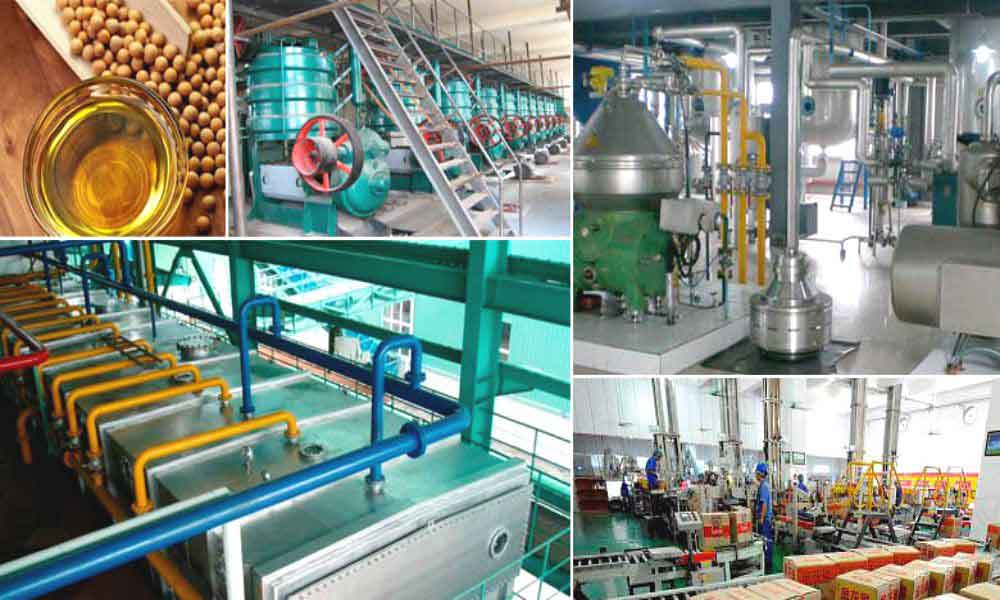14 January / 4:56 PM
Soybean Oil Manufacturing Unit

How To Start Soybean Oil Manufacturing Business
Soybean oil is an important edible cooking oil globally. It is a vegetable oil. Generally, it is produced from the seeds. Here in this article, we intend to explore how to start soybean oil manufacturing business.
In starting a soybean oil production business, the location plays a most important role. You must establish the unit nearby the soybean growing areas. Because you have to ensure the supply of soy seeds at your factory without spending much transportation cost. Otherwise, you won’t be able to get the maximum profitability from the business.
Some of the major soybean producing countries are Uruguay, Bolivia, Ukraine, Canada, India, and China. India is Asia’s second largest producer of soybeans. And some of the major soybean-producing states are Maharashtra, Madhya Pradesh, Rajasthan, Andhra Pradesh, Karnataka, and Gujarat. Our country accounts for 3.95% of global production according to Statista.
Commercially, there are two methods for producing soyabean oil. You can produce the oil either by pressing or solvent extraction method. Basically, screw pressing method is a mechanical process. The process is complicated and the oil yield is much lower. On the other hand, solvent extraction is a chemical process. It ensures higher oil yield.
Therefore, we strongly recommend going with the solvent extraction process.
Additionally, you can start the soybean oil production unit by two ways. One is only oil production. And you will send the oil to other oil refinery companies.
Basically, you can start this type of unit with moderate capital investment.
The another way you can start the unit along with a refinery setup. However, this type of unit operates as large-scale and demands substantial capital investment.
Soybean Oil Market Potential
Basically, the oil has omega-3 fatty acids, polyunsaturated fats, and low saturated fats.
Therefore, it is popular as one of the healthiest cooking oils.
It currently represents the second largest (after palm oil) edible oil consumed in the world with the United States and China representing the largest markets.
The majority of its global demand currently comes from the food industry. Within the food industry, most of the demand is for cooking and as a condiment in salads. Also, the oil finds applications in industrial paints, lubricants, solvents, cleaners, adhesives, oleochemicals, biodiesel, biocomposites, etc.
Due to its high unsaturated fat content, it undergoes early oxidation upon exposure to air, light or moisture – which makes it suitable for printing inks and oil paint formulations. According to the industry experts, the demand of soybean oil to grow at a CAGR of around 4% during the next five years.
Licensing & Permissions for Soybean Oil Production Unit
Basically, the requirement of specific licenses mainly depends on the finished product. First, determine whether you want to sell the solvent extracted oil or refined soybean oil. In addition, check your state law for further confirmation. Here, we have compiled some of the basic requirements.

Soybean Oil Production Plant Setup & Machinery
For establishing the plant, the primary requirement is the land. If you already have a space for the manufacturing operation, then it is fine. Otherwise, you can secure a space at any industrial zone on rent. Generally, a 2000 Sq Ft built up area is sufficient for a small-scale production. Some of the most important machines are
Soybean Oil Extraction Process by Solvent Extraction
The first step is cleaning the soy seeds. Then, dry the seeds and dehull prior to oil extraction. You have to remove the soybean hulls because they absorb oil and give a lower yield. However, you can dehull by cracking the soybeans. Finally, separate the hulls and cracked soybeans mechanically. Additionally, you can use magnets to separate any iron particle from the soybeans.The soybeans are also heated to about 75°C to coagulate the soy proteins to make the oil extraction easier. For extracting the oil cut the soybeans in flakes. Put them in a percolation extractors and immerse with a solvent, normally hexane.
Counterflow is used as extraction system because it gives the highest yield. After removing the hexane, the extracted flakes only contain about 1% of soybean oil and is used as livestock meal or to produce food products such as soy protein. Finally, separate the hexane from the soybean oil in evaporators. And recover the evaporated hexane and return to the extraction process. Now, the hexane free crude soybean oil is ready to go to the refineries.
Tags

